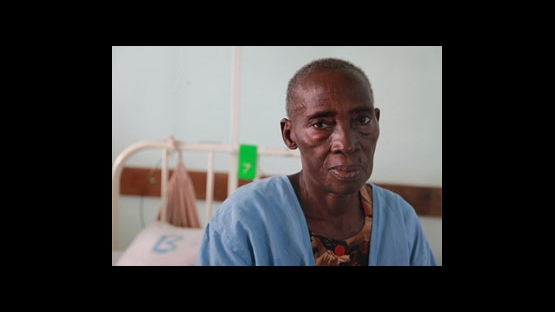What can one million US dollars buy? What's it really worth?
One million dollars can buy 1 626 personal computers for your local school, or allow 34 people to take a three month round-the-world cruise on the Queen Mary 2, or even buy four or five Bentley Continental GTCs, if you like that kind of thing.
But for many cancer patients in developing countries, one million US dollars means the difference between life and death. That's the message the IAEA has been sending to radiotherapy machine manufacturers since 2009. That is, if there were radiotherapy machines being sold for one million dollars.
Currently radiotherapy machines and the associated equipment needed to set up a basic radiotherapy clinic cost more than three million US dollars, which is too expensive for many developing countries.
Most developing countries need much more than just the machine. They need a complete package which includes training for staff in how to properly operate the equipment, maintenance, as well as a treatment planning system (a computer program that helps doctors decide how best to apply the radiation to treat each individual tumour).
In 2009 the IAEA challenged manufacturers to come up with complete packages that cost one million US dollars or less. The group that was formed to realize this goal is called the Advisory Group on increasing Access to Radiotherapy Technology in developing countries (AGaRT) and had its second meeting in November. There, seven radiotherapy machine manufacturers from Canada, the Czech Republic, Germany, India and the United Kingdom presented their ideas and packages, and solicited feedback from users from developing countries.
"The average price of the packages available from manufacturers is decreasing but it has not yet reached the target AGaRT Members are hoping for. But every journey starts somewhere, so we're pleased that negotiations are moving in the right direction," says Jean-Pierre Cayol from the IAEA Programme of Action for Cancer Therapy (PACT).
More Than Money
In these negotiations the IAEA works as a facilitator, providing an avenue for users - oncologists and technologists from developing Member States - to tell providers their specific needs, and how the technology could be made to suit their operating environment. And manufacturers can discuss the functions and features that they can provide.
"It's not only price that AGaRT is concerned with," says Shyam Shrivastava, Chairman of the November AGaRT meeting and Head of the Department of Oncology at the Tata Memorial Hospital in Mumbai, India. "It's getting manufacturers to build machines that are not so sensitive to variability in temperature, electricity supply, or water quality - since the cooling systems for these pieces of equipment usually require very pure water to run.
"AGaRT seeks to ensure that the machines that get to the developing world won't break down at the drop of a hat, but are sturdy and able to handle the environment," says Shrivastava.
Much More...
Over 50% of cancer patients need radiotherapy during the course of their treatment. One radiotherapy machine can treat about 500 cancer patients every year.
Based on current incidence of cancer, it is estimated that there is a shortage of up to 5 000 machines in developing countries. There are more than two dozen countries that don't have any radiotherapy machines at all.
The hoped for increase in the number of radiotherapy machines available in developing Member States would mean that patients would not have to travel so far - whether inside or outside their countries - or wait so long for life-saving cancer treatment.


